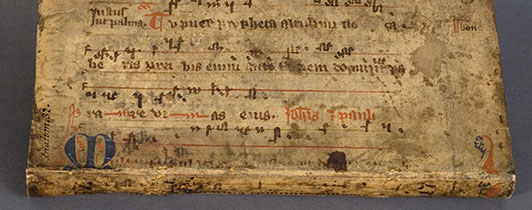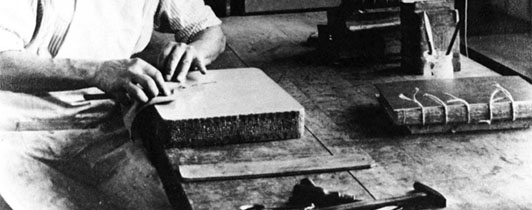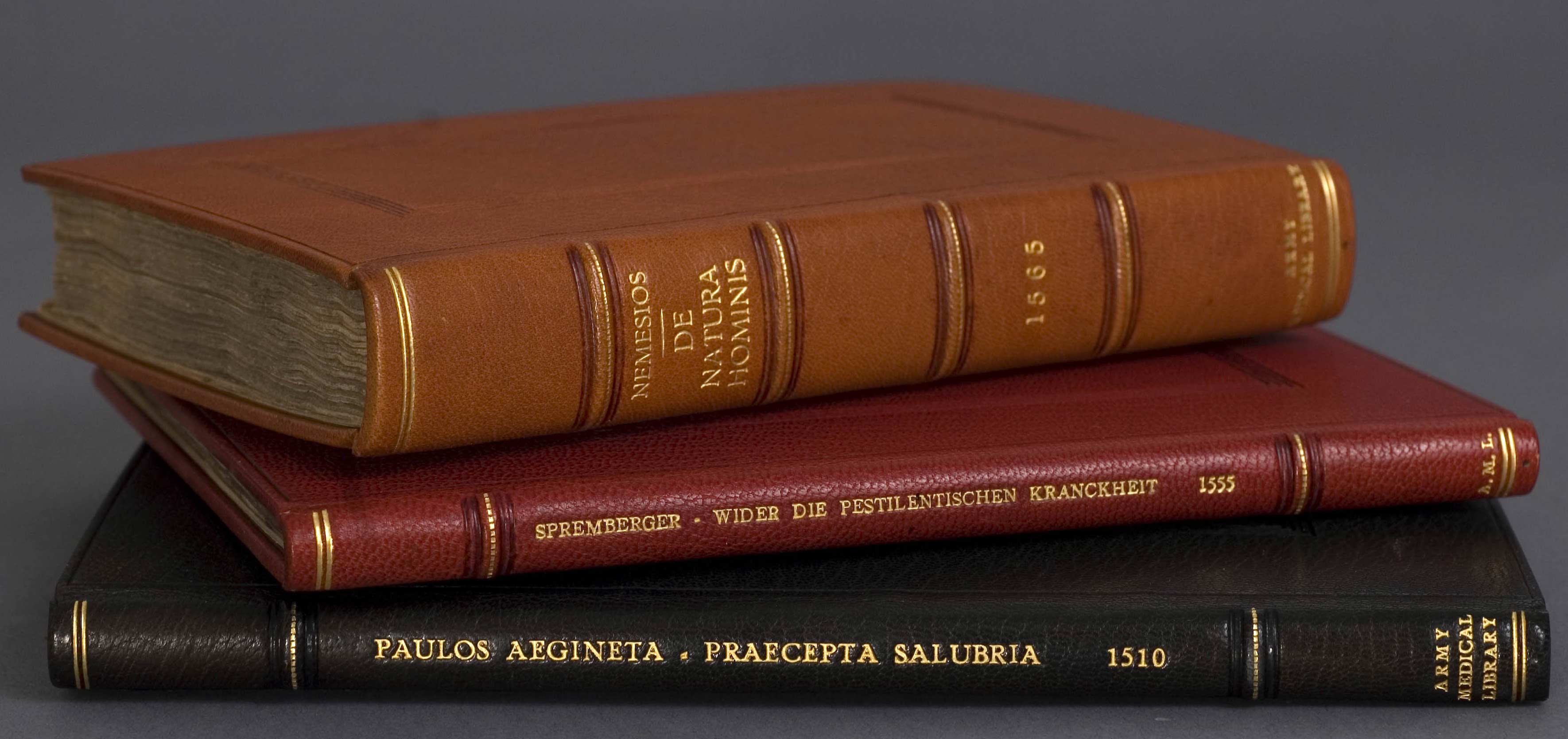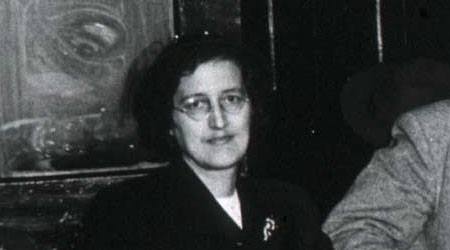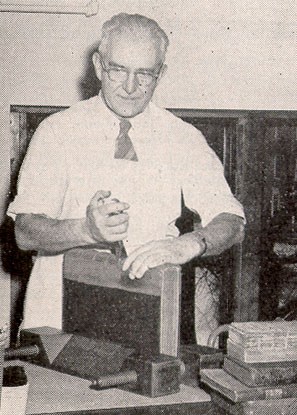
Jean Eschman, 1949
The story of the Bathtub Collection begins in the middle of the last century. In the 1940's, The Army Medical Library (AML), as the National Library of Medicine was then known, began a serious conservation program for its rare book collection. To carry out this program the AML hired Dorothy Schullian as Curator of Rare Books and Jean Eschman, a master bookbinder from Switzerland. Eschman repaired many of the old bindings and, when he considered them beyond repair, replaced them with new leather covers.
Dorothy M. Schullian was a Classics scholar with a doctorate in Latin from University of Chicago. She taught at Western Reserve and Albion College in Michigan before joining the National Library of Medicine staff. She was a learned and meticulous scholar, with knowledge of a wide range of subjects as well as medical history. Her chief legacies are A Catalogue of Incunabula and Manuscripts in the Army Medical Library, published in 1950—and the Bathtub Collection.
When the books were rebound in the bindery, Dr. Schullian examined the discarded bindings. Aware of the interest and value of the materials found within the discarded bindings, she resolved to preserve them. She took them home, soaked them in her bathtub to loosen the paste and separate the layers of paper or parchment, and hung them up to dry. She placed the materials from each individual binding in labeled envelopes.
The History of Medicine Division staff came to refer to them as the "Bathtub Collection," both a tribute to Dr. Schullian's labors and a mark of affection for this eccentric assemblage.
Here the Frailest Leaves
In 1953, Dorothy Schullian wrote an article on the collection: "Here the Frailest Leaves" Papers of the Bibliographical Society of America, 1953 v. 47, no. 3, pp. 201-217. (Download PDF: https://www.nlm.nih.gov/exhibition/bathtub/leaves.pdf)

